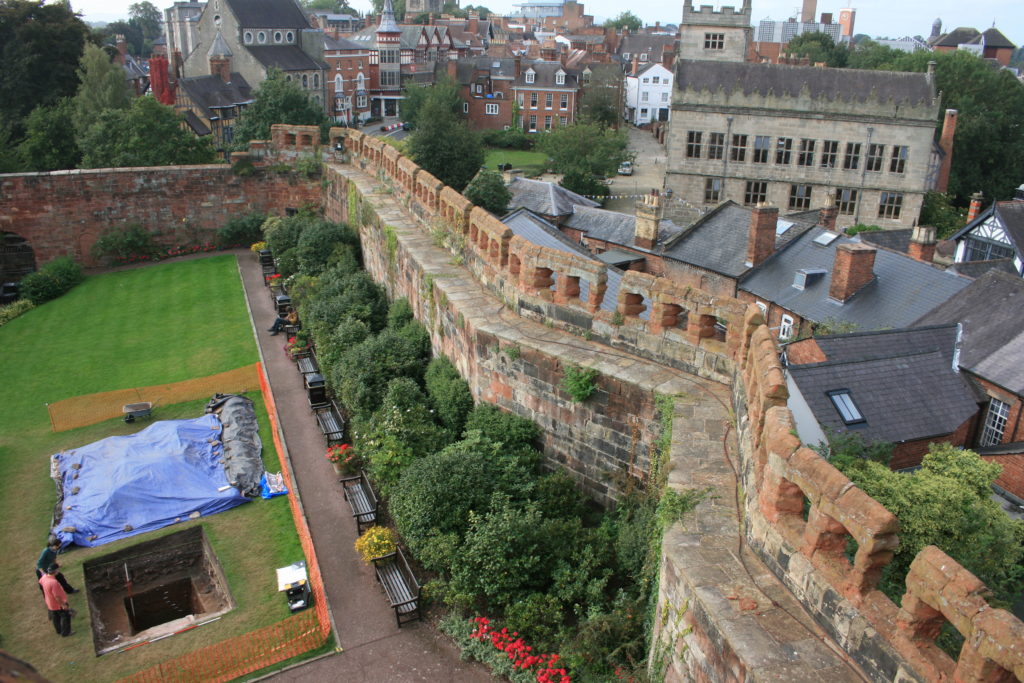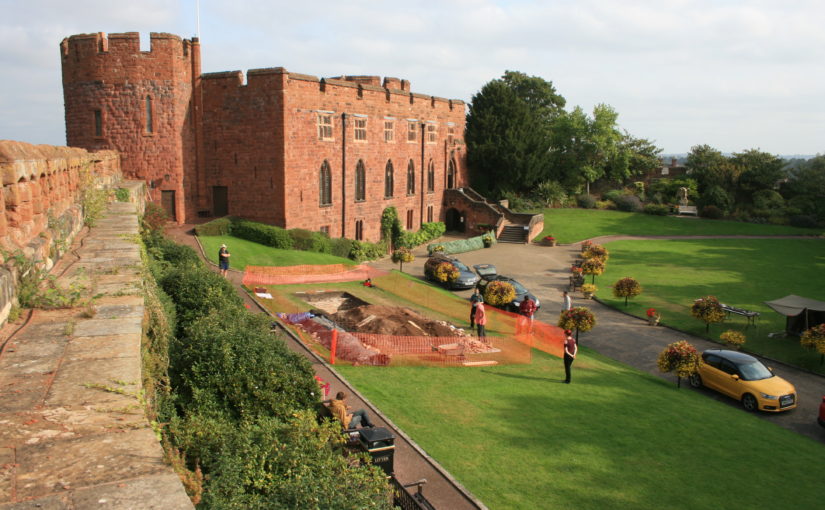Shrewsbury Castle Excavation Director, Dr Nigel Baker, reviews the second season of excavations at the castle which has just ended, with an unexpected conclusion.
Shrewsbury Castle has sometimes been described (most often by the writer of this blog!) as one of the best-preserved shire town motte-and-bailey castles in the west of England. This remains true – at least in the sense that it has never been quarried away for gravel, nor had a prison or law courts built on top of it, nor was it demolished and redeveloped after the Civil War. Nevertheless, such a statement now requires a hefty footnote.
Subscribe to our quarterly newsletter
A visitor, walking into the inner bailey at the foot of the motte sees crenelated curtain walls rising from the top of substantial ramparts: the impression of a classic castle sequence with earth-and-timber fortifications renewed in stone, is overwhelming. The 2020 work has however shown that neither the ramparts nor the western curtain walls are quite what they seem. Excavation to a depth of more than two metres in the western rampart has shown that at least half of its height was a product of the post-medieval centuries – with a substantial contribution probably made by Thomas Telford during his ‘restoration’ of the castle in 1786-90, enhanced by his simultaneous lowering of the ground level across the interior.

But the medieval strata below Telford’s rubble also show that the western curtain wall, and by implication the standing castle building, the camera regis of the later 1230s, can no longer be seen as simple improvements to the original earthwork castle as the ground beneath them was found to drop away sharply, the slope levelled up by a massive medieval earthmoving operation. It seems that the present outline of the castle – and the familiar view of it from the railway station below, are a product of the early 13th century (dating subject to confirmation when the pottery has been analysed) – dubbed Shrewsbury Castle 2 by the excavators. The ‘original’ motte-and-bailey, first heard of when it resisted a siege in 1069, must have had a perimeter that was around 25% smaller, confined to the original hilltop. This castle (inevitably ‘Shrewsbury Castle 1’) was nevertheless heavily fortified, as the substantial motte ditch found in 2019 shows. As originally conceived, the ‘inner bailey’ was little more than a lobe-shaped barbican, protecting access up onto the motte, with little room for buildings within it. One of the implications of this is that the most important buildings – like the royal hall – must have been on the motte top.
The medieval landfill operation is also of interest on account of the rubbish contained in its strata. Preliminary visual identification of the animal bones suggests that game species are present, possibly pike, possibly swan, and it is likely that further work on this material will add to the growing corpus of evidence for high-status diet on castle sites throughout the region.
Subscribe to our quarterly newsletter
The excavation was funded by the Castle Studies Trust and supported by University Centre Shrewsbury under Professor Tim Jenkins and Dr Morn Capper. Archaeological direction was by Dr Nigel Baker and Dai Williams and the work was undertaken by local volunteers and UCS postgraduates and undergraduates.
Feature image courtesy of Dr Nigel Baker
